
|
|
|
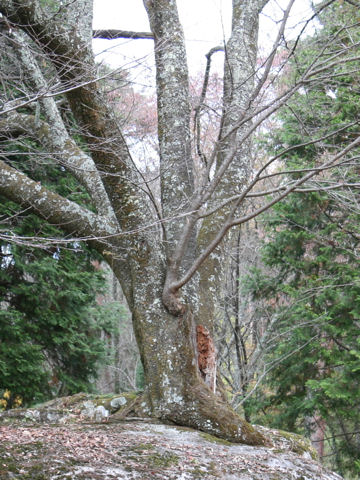 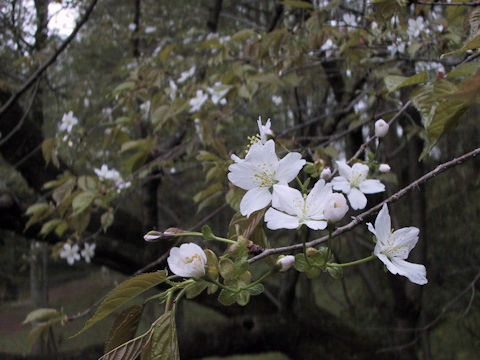 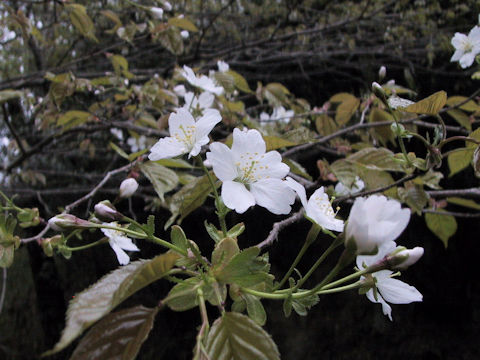 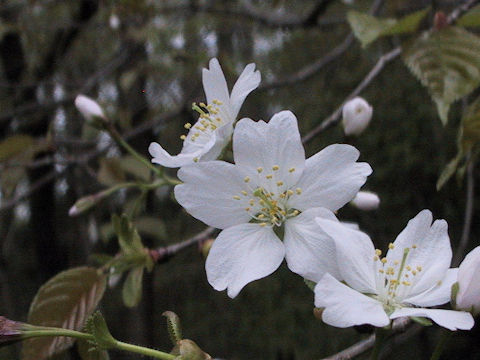 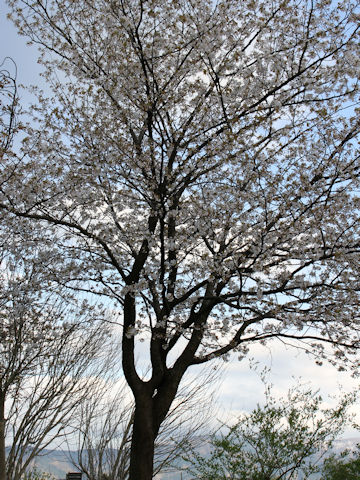 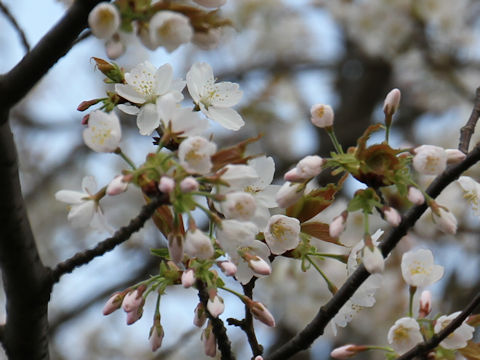 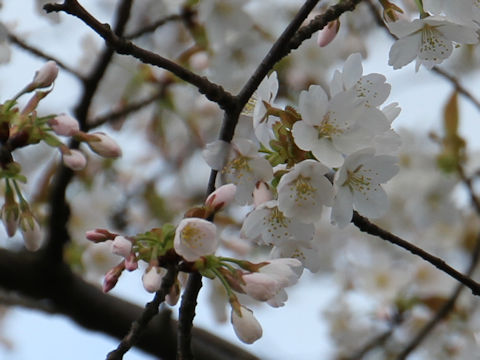 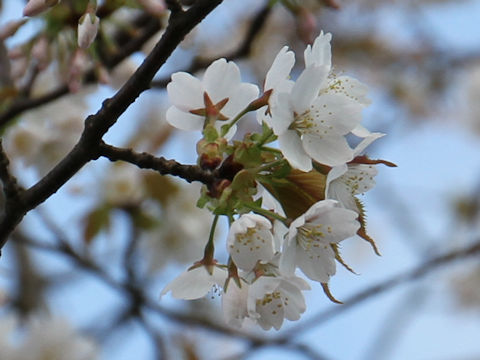 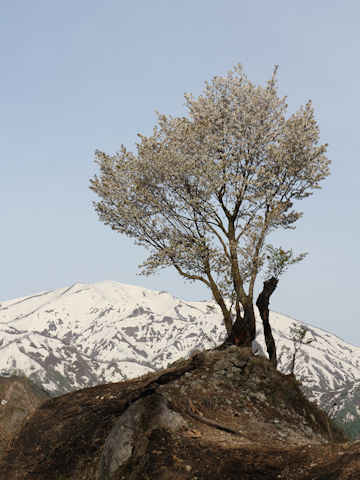 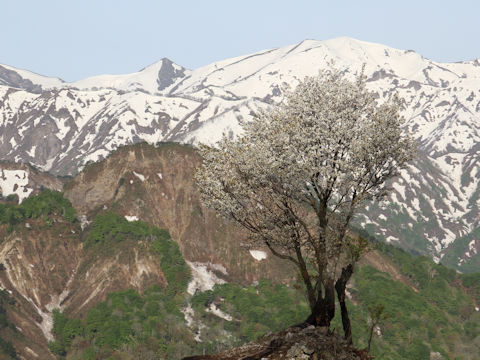 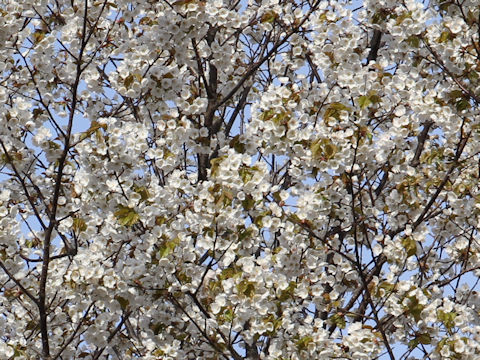 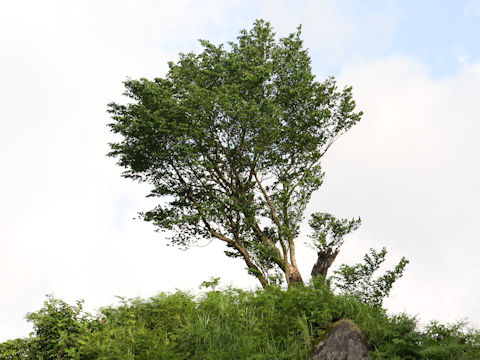 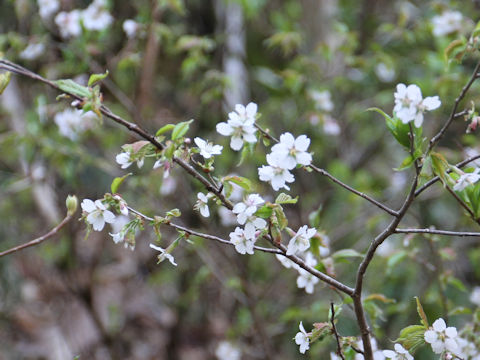 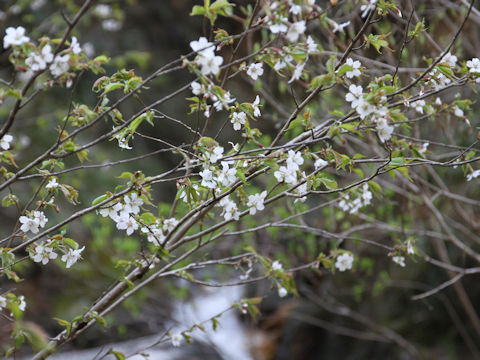 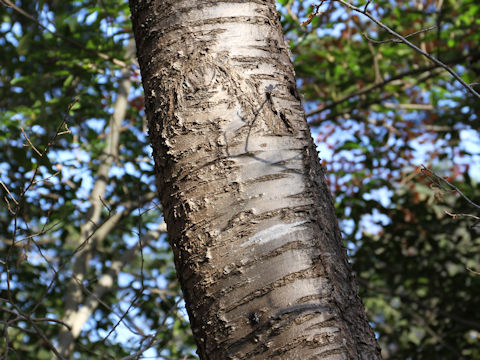  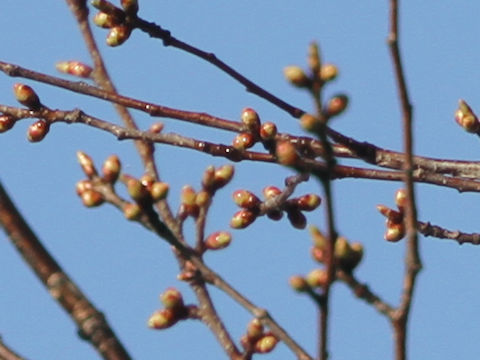 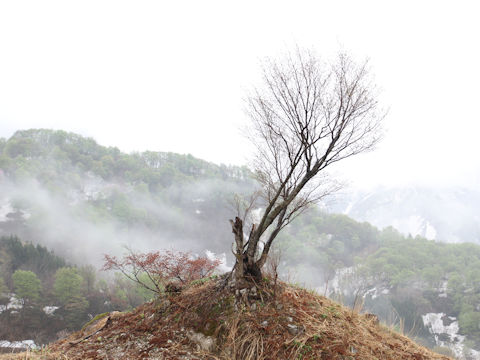 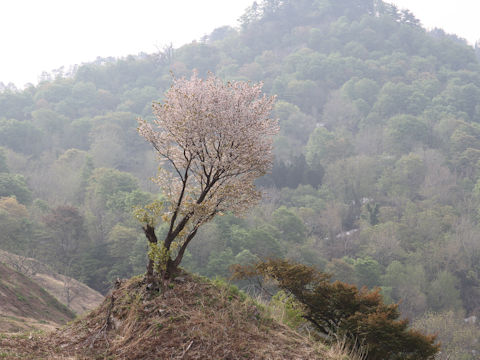 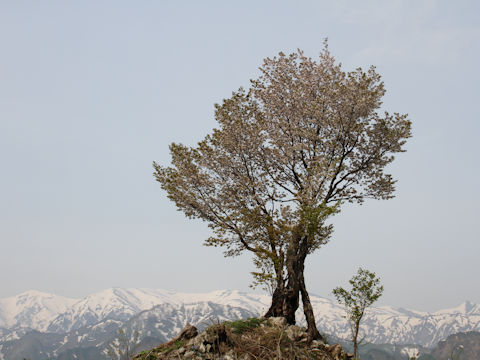 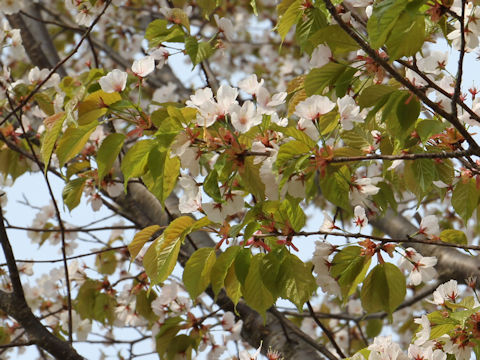 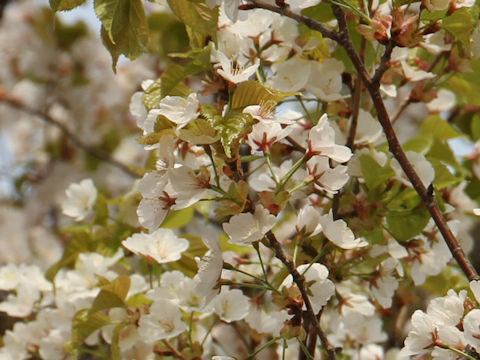 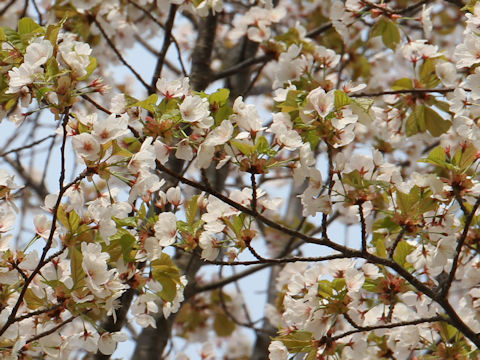 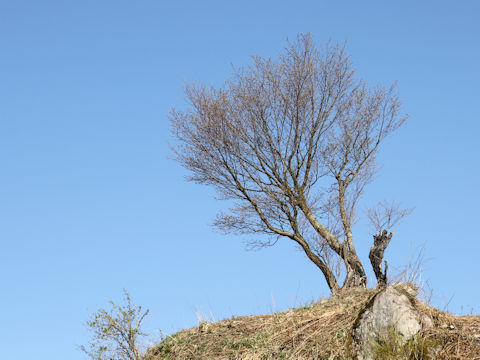 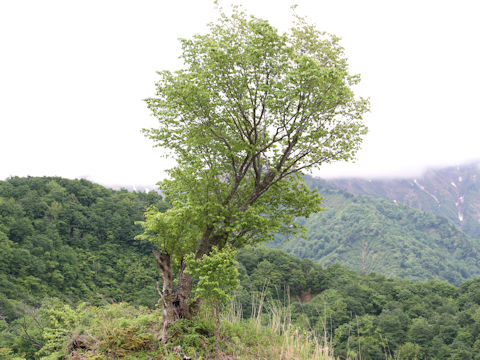 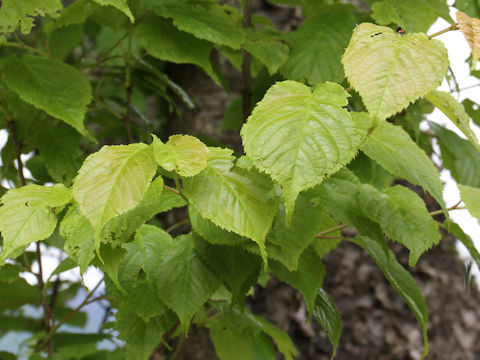 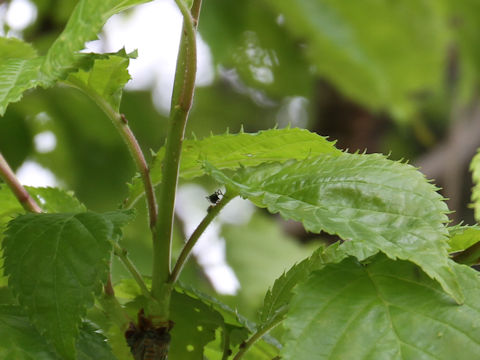 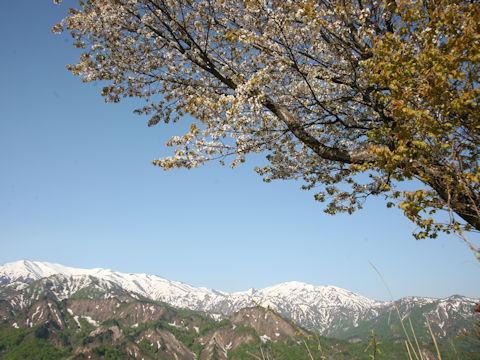 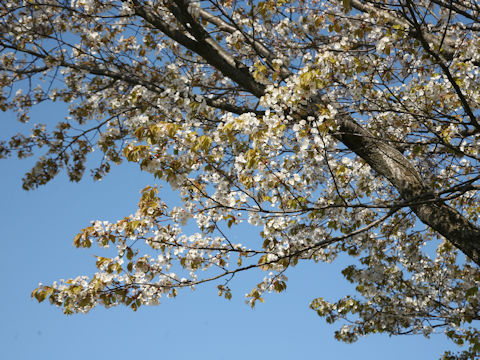 |
|
|
|
わが国の各地をはじめ、朝鮮半島や中国東北部に分布しています。山地に生え、高さは25メートルにもなります。4月から5月ごろ、葉の展開と同時に2〜3個の花を散房状に咲かせます。花弁は白色またはわずかに紅色を帯びます。「やまざくら」に似ていますが、花期が遅く、葉の裏面や葉柄などに開出毛があります。写真上は、愛知県豊田市の天然記念物に指定されている個体。中国名では「毛葉山櫻桃(mao ye shan ying hua)」。 |
|
|
バラ科サクラ属の落葉高木で、学名は Prunus verecunda (syn. Cerasus verecunda)。英名はありません。 |
|
|
"Kasumi-zakura" (Prunus verecunda) belongs to Rosaceae (the Rose family). It is a tall deciduous tree that is native throughout Japan, the Korean Peninsula and northeastern China. This tree grows in mountains and can reach about 25 m in height. The 2-3 flowers bloom in corymbs-like clusters from April to May with new leaves. The petals are white or tinged pale rose pink. This cherry blossoms resembles Yama-zakura (Prunus jamasakura), but it has a slow flower season, and spreading hairs on the abaxial sides of leaves and leaf stalks. The upper photo shows an individual designated as a natural monument in Toyota City, Aichi Prefecture. The Chinese name is "毛葉山櫻桃" (mao ye shan ying hua). |
|
|
[上] 愛知県豊田市市場町「緑の公園」にて、2006年11月16日撮影。 [中1〜中3] 大阪府交野市「大阪市大付属植物園」にて、2003年04月19日撮影。 [中4〜中7] 富山県南砺市「砺波市園芸植物園」にて、2017年04月22日撮影。 [中8〜中10] 山形県小国町小玉川「樽口峠」にて、2017年05月09日撮影。 [中11] 同上にて、2017年07月02日撮影。 [中15・中16] 同上にて、2018年04月19日撮影。 [中17] 同上にて、2018年04月24日撮影。 [中18〜中22] 同上にて、2018年05月02日撮影。 [中23] 同上にて、2019年05月04日撮影。 [中24〜中26] 同上にて、2020年05月22日撮影。 [中27・下] 同上にて、2022年05月05日撮影。 [中12・中13] 山形県小国町小玉川「岩魚沢」にて、2016年04月24日撮影。 [中14] 宮城県仙台市青葉区「東北大学植物園」にて、2017年11月28日撮影。 |

|
|
Shu Suehiro |